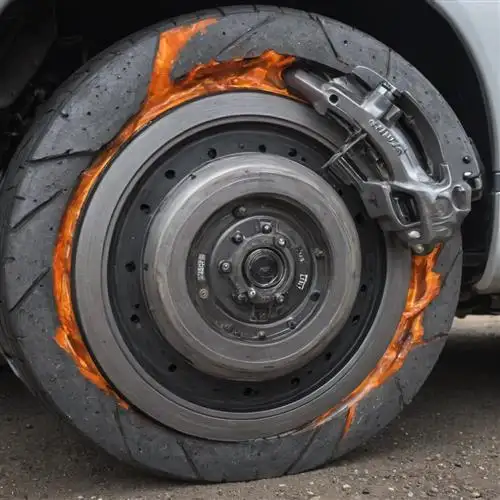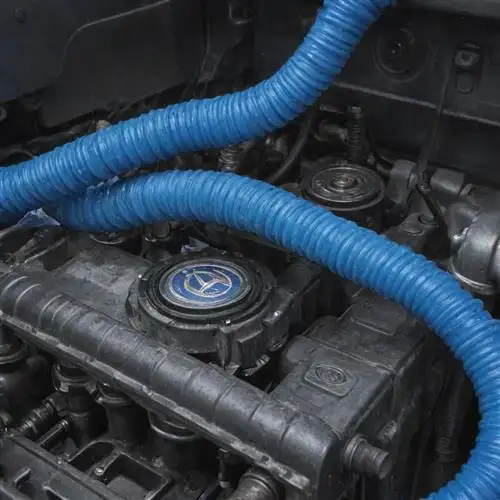
Regular Oil Changes
Maintaining the health of your Toyota Tundra is crucial, and one of the most important aspects of this is ensuring regular oil changes. Engine oil is the lifeblood of your vehicle, lubricating the intricate components and preventing wear and tear. Neglecting this crucial task can lead to a host of problems, from decreased fuel efficiency to catastrophic engine failure. As a Tundra owner, it's essential to understand the importance of regular oil changes and how to properly execute this maintenance task.
The recommended oil change interval for a Toyota Tundra can vary depending on factors such as driving conditions, age of the vehicle, and the type of oil used. Generally, it's advisable to change the oil every 5,000 to 10,000 miles, or every 6 to 12 months, whichever comes first. However, it's always best to consult your owner's manual or a trusted mechanic for the specific recommendations for your Tundra.
When it comes to selecting the right oil for your Tundra, it's important to use a high-quality, synthetic oil that meets the manufacturer's specifications. Synthetic oils are designed to provide superior protection and performance, and they can often extend the interval between oil changes. Be sure to use the recommended viscosity grade as well, as this can impact the oil's ability to effectively lubricate your engine.
Performing the oil change yourself can be a cost-effective and rewarding experience, but it's important to do it properly. Here are some key steps to follow:
- Ensure you have the necessary tools, including a oil filter wrench, jack stands, and a drain pan.
- Locate the oil drain plug, typically located at the bottom of the oil pan, and place the drain pan underneath.
- Loosen the plug and allow the old oil to completely drain from the pan.
- Once drained, replace the drain plug and tighten it securely.
- Locate the oil filter, often accessible from the top or side of the engine, and use the filter wrench to remove it.
- Apply a thin coat of new oil to the gasket of the new filter, then screw it on tightly by hand.
- Locate the oil fill cap, typically at the top of the engine, and pour in the recommended amount and type of new oil.
- Start the engine and check for any leaks, then top up the oil if necessary.
Proper disposal of the old oil is also important, as it can be harmful to the environment if not handled correctly. Many auto parts stores and service centers offer oil recycling programs, so be sure to take advantage of these.
Brake System Maintenance
Maintaining the brake system of your Toyota Tundra is crucial for ensuring your safety and the longevity of your vehicle. The brake system is one of the most critical components, responsible for bringing your Tundra to a controlled and reliable stop. Neglecting brake maintenance can lead to costly repairs and, more importantly, compromise your driving experience and put you and others at risk. Let's dive into the details of why your Tundra's brake system requires regular attention and how you can keep it in top-notch condition.
Brake Pad Inspection and Replacement: The brake pads are the primary components that make contact with the brake rotors, converting the kinetic energy of your Tundra into heat and causing it to slow down. Over time, the brake pads wear down, reducing their effectiveness and increasing the risk of brake failure. It's recommended to have your brake pads inspected every 12,000 to 15,000 miles, or as specified in your Tundra's maintenance schedule. When the pads reach the minimum thickness, they should be replaced to ensure optimal braking performance.
Brake Rotor Resurfacing or Replacement: The brake rotors are the discs that the brake pads grip onto to slow down your Tundra. As the pads wear, the rotors can also become uneven or thin, reducing their effectiveness. Regularly inspecting the rotors and resurfacing or replacing them when necessary is crucial. Resurfacing can help restore the rotors to their original condition, while replacement may be required if the rotors are severely worn or damaged.
Brake Fluid Flush and Replacement: The brake fluid in your Tundra's system is responsible for transmitting the force from the brake pedal to the brake calipers, which then apply pressure to the brake pads. Over time, the brake fluid can become contaminated with moisture, reducing its effectiveness and increasing the risk of brake failure. It's recommended to have the brake fluid flushed and replaced every 30,000 miles or as per the manufacturer's recommendations.
Caliper and Hose Inspection: The brake calipers, which hold the brake pads, and the brake hoses, which carry the brake fluid, should also be inspected regularly. Calipers can become stuck or worn, leading to uneven brake pad wear, while brake hoses can become cracked or damaged, causing fluid leaks. Regular inspection and replacement of these components can help ensure your Tundra's brake system is functioning optimally.
Tire Rotation and Alignment
Maintaining the health and performance of your Toyota Tundra's tires is crucial for both the vehicle's longevity and your safety on the road. Regular tire rotation and alignment are essential tasks that should not be overlooked. By understanding the importance of these procedures and how to execute them properly, you can ensure your Tundra delivers a smooth, efficient, and safe driving experience for years to come.
Tire rotation is the process of moving the tires from one position on the vehicle to another, typically in a specific pattern. This helps to ensure even wear across all four tires, which can extend their lifespan and improve overall handling. For your Tundra, it's recommended to rotate the tires every 5,000 to 7,500 miles, or as specified in your owner's manual. During the rotation, it's also a good idea to have the tires inspected for any signs of damage or uneven wear, which can indicate potential issues with the alignment or suspension.
Wheel alignment, on the other hand, refers to the adjustment of the vehicle's suspension components to ensure the tires are properly positioned relative to the road and each other. Misalignment can lead to a variety of problems, including uneven tire wear, reduced fuel efficiency, and even handling issues. It's generally recommended to have your Tundra's alignment checked annually or whenever you notice any changes in the vehicle's handling or tire wear patterns.
- Park your Tundra on a level surface and engage the parking brake.
- Loosen the lug nuts on all four wheels, but do not remove them yet.
- Use a floor jack to safely lift the vehicle, ensuring the tires are off the ground.
- Remove the lug nuts and tires, then swap their positions according to the recommended rotation pattern (e.g., front tires move to the rear, rear tires move to the front).
- Replace the tires and hand-tighten the lug nuts.
- Lower the vehicle back to the ground and fully tighten the lug nuts using a torque wrench.
- Inspect the tires for any signs of wear or damage, and have them balanced if necessary.
As for wheel alignment, it's best to have this service performed by a qualified automotive technician. They will use specialized equipment to measure the vehicle's camber, caster, and toe angles, and make any necessary adjustments to ensure optimal alignment. It's important to note that certain modifications, such as installing larger tires or lift kits, may require a more comprehensive alignment to ensure proper handling and tire wear.
Fuel System Cleaning
The fuel system in your Toyota Tundra is a crucial component that deserves meticulous attention. Over time, deposits can build up in the fuel injectors, fuel lines, and other components, diminishing engine performance, fuel efficiency, and even causing long-term damage if left unchecked. Regular fuel system cleaning is essential to maintaining your Tundra's optimal performance and ensuring its longevity.
One of the primary benefits of fuel system cleaning is improved fuel efficiency. Clogged or dirty fuel injectors can cause your engine to work harder, resulting in increased fuel consumption. By cleaning the fuel system, you can restore the proper fuel flow and atomization, allowing your Tundra's engine to operate more efficiently and use less fuel.
In addition to improved fuel economy, regular fuel system maintenance can also enhance your Tundra's acceleration and power delivery. Deposits in the fuel system can restrict the flow of fuel, leading to a sluggish and unresponsive throttle. Cleaning the fuel system can remove these blockages, allowing your Tundra's engine to respond more quickly and provide a more satisfying driving experience.
Neglecting fuel system maintenance can also lead to more serious issues down the line. Over time, deposits can harden and become increasingly difficult to remove, potentially causing damage to fuel injectors, fuel pumps, and other components. This can result in costly repairs and a significant decrease in your Tundra's overall performance and reliability.
- Fuel system cleaners: Using a quality fuel system cleaner periodically can help dissolve and remove deposits from the fuel injectors, fuel lines, and other components.
- Fuel filter replacement: Replace the fuel filter according to your Tundra's recommended service schedule to ensure proper fuel flow and filtration.
- Professional fuel system cleaning: Consult your Toyota dealer or a trusted mechanic for a comprehensive fuel system cleaning service, which may involve more thorough cleaning methods, such as ultrasonic or chemical cleaning.
Coolant System Maintenance
Maintaining the coolant system in your Toyota Tundra is crucial to ensuring its longevity and optimal performance. The coolant, also known as antifreeze, plays a vital role in regulating the engine's temperature, preventing overheating, and protecting the metal components from corrosion. Neglecting this essential system can lead to costly repairs and even engine failure, so it's essential to follow a regular maintenance schedule.
The recommended interval for flushing and replacing the coolant in your Tundra is typically every 30,000 to 60,000 miles, or every 2 to 3 years, whichever comes first. However, it's important to consult your owner's manual or a trusted mechanic to determine the specific maintenance schedule for your vehicle, as it may vary based on factors such as driving conditions, climate, and manufacturer recommendations.
When it's time to service the coolant system, you'll want to ensure that you use the correct type and amount of coolant. Toyota Tundras typically require a specific blend of ethylene glycol-based coolant, and using the wrong type can lead to compatibility issues and damage to the system. It's essential to follow the manufacturer's recommendations to ensure that the coolant is compatible with your Tundra's components.
In addition to regular coolant system flushes, it's also important to check the coolant level and condition regularly. Look for signs of leaks, discoloration, or contamination, and address any issues promptly. Keeping the coolant at the proper level and in good condition can help prevent overheating, which can be a common issue with larger trucks like the Toyota Tundra.
If you're unsure about how to properly maintain your Tundra's coolant system, consider referring to our article "I Maintained My Tundra This Way and So Can You." This guide provides step-by-step instructions and valuable tips to help you perform this important maintenance task with confidence.
















